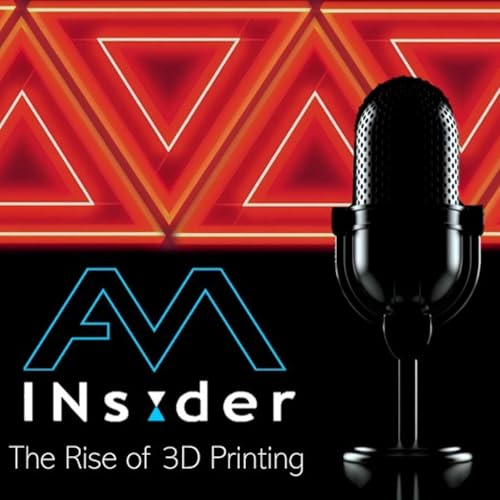
"Longtimer" (The Everett Files)
Échec de l'ajout au panier.
Veuillez réessayer plus tard
Échec de l'ajout à la liste d'envies.
Veuillez réessayer plus tard
Échec de la suppression de la liste d’envies.
Veuillez réessayer plus tard
Échec du suivi du balado
Ne plus suivre le balado a échoué
-
Narrateur(s):
-
Auteur(s):
À propos de cet audio
Send us a text
This episode of the AM Insider podcast is hosted by Justin Hopkins and Dustin Kloempken. It is part of a miniseries focused on the beginnings of additive manufacturing (AM), aiming to share experiences from industry veterans.
The guest is Darin Everett, who is referred to as an industry "longtimer". He joined Stratasys in 1999 when the company was relatively small, starting at $28.5 million. Darin agreed with the common observation that the industry’s start-up era was "darn fun" and dynamic.
Career and Focus at Stratasys
- Darin studied mechanical engineering but transitioned into sales to better communicate with his typical customers (mechanical engineers). Before joining Stratasys, he worked in demanding traditional manufacturing environments like oil refineries, requiring him to wear fire retardant clothing and steel-toe boots daily.
- His passion and specialty during his 16 years at Stratasys was manufacturing, production, and tooling.
- He began in direct sales of large frame systems ("big boxes"). In January 2009, he moved to the first segment team (starting with aerospace) to develop applications such as composite layout tools, jigs, fixtures, and drill guides. After the Objet merger in late 2012, he helped resellers worldwide sell these manufacturing applications through channel management.
- After a sabbatical (2017 to 2020), he returned to work in St. Louis, motivated to be part of the push to bring manufacturing back to the US. He currently focuses on the metal side of AM, specifically refractory metals using electron beam powder bed fusion.
Selling and Production Challenges
- Selling "Black Magic": In the early 2000s, selling AM felt like selling "black magic" as engineers were highly skeptical.
- Focus on Solutions: Darin stressed that the industry sells solutions, not machines, and the only relevant output is the part. Sales must address the customer's pain or the losses they are preventing.
- High Stakes: Production cannot stop, as a shutdown in high-requirement environments (like a refinery) can cost $1 million to $3 million a day. High-requirement applications must justify the entire system cost (machine, people, floor space) with a one-to-two-year ROI.
- Certification Hurdles: Material qualification and certification are lengthy and expensive. The effort to fly the first 3D-printed part stalled for over five years due to the multi-million dollar cost of obtaining burn data and allowables. Currently, a hurdle for newer processes, such as electron beam powder bed fusion of tungsten, is that there is no US-certified lab that has a standardized process to prepare and test the required specimens.
Future Outlook and Advice
- Future Outlook: Darin believes AM has a great future but anticipates an overdue "squeeze" on the number of OEMs. He expects growth tied to critical items returning to US manufacturing, especially in defense, energy, and nuclear fusion.
- Key Advice: The second sale (the repeat sale) is the true test of a company, the machine, and the relationship, as it requires proving oneself after the initial battle.
- Recommended Resources: Darin advised watching "How Things Are Made" to understand traditional manufacturing (casting, forging, molding), reading the Wohlers Report annually, and attending AMUG for real feedback. He also recommended resources on sales and marketing, including Chris Harris’s book Phase Selling.
Pas encore de commentaire


